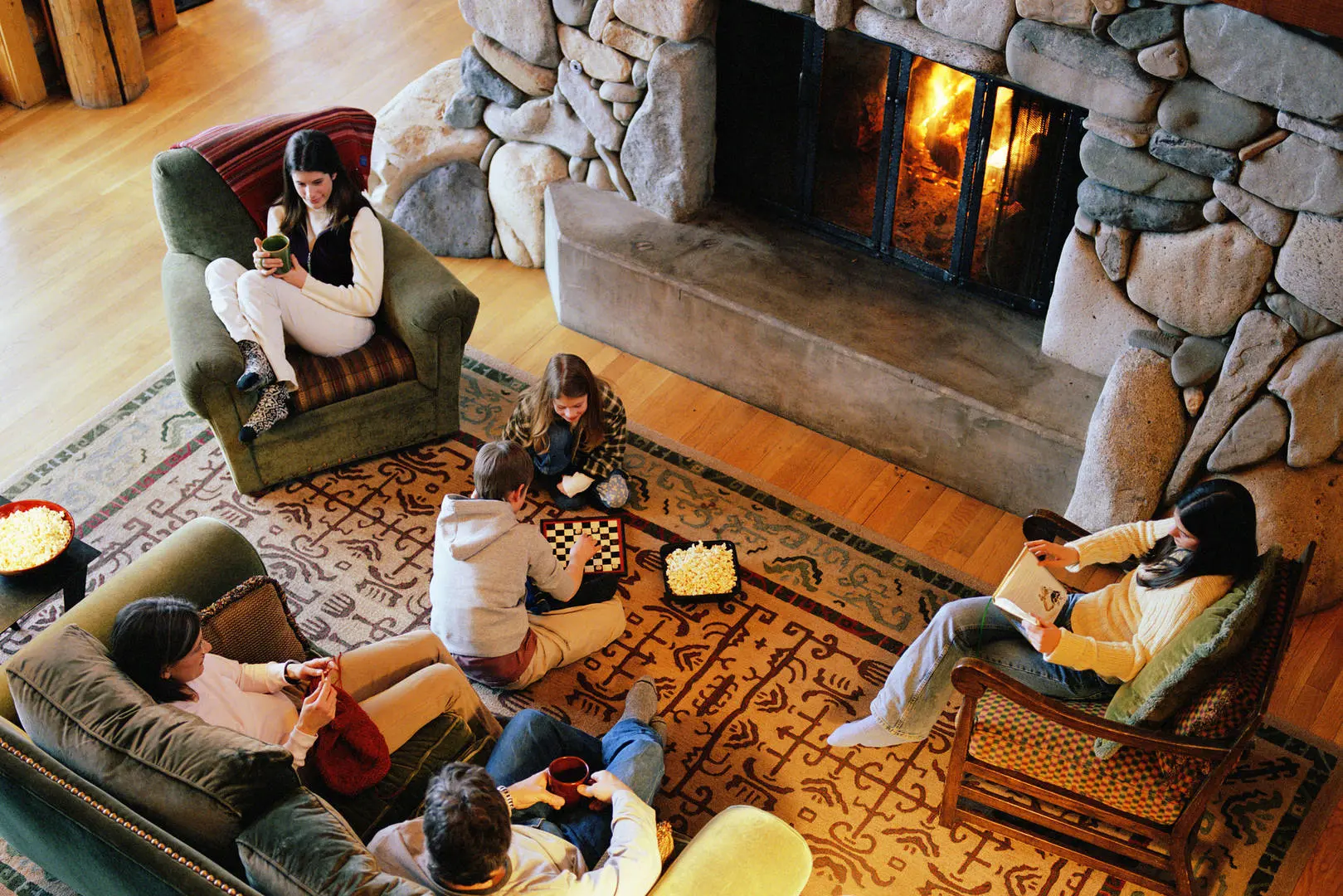
Nothing creates the perfect winter weather ambiance as well as a log in the fireplace and family gathered around to bask in its warmth and glow. Of course, playing with or near fire can be dangerous, so remember these tips from the American Academy of Pediatrics before lighting your next fire at home.
- If possible, keep a window cracked open while the fire is burning.
- Be certain the chimney damper or flue is open before starting a fire. Keeping the damper or flue open until the fire is out will draw smoke out of the house. The damper can be checked by looking up into the chimney with a flashlight or mirror. Do not close the damper until the embers have completely stopped burning.
- Use dry and well-aged wood. Wet or green wood causes more smoke and contributes to soot buildup in the chimney. Dried wood burns with less smoke and burns more evenly.
- Using smaller pieces of wood placed on a grate will cause them to burn faster and produce less smoke.
- Clean out ashes from previous fires. Levels of ash at the base of the fireplace should be kept to 1 inch or less as a thicker layer will restrict the air supply to logs, resulting in more smoke.
- Have your chimney checked annually by a professional.
- Even if the chimney is not due for cleaning, it is important to check for animal nests or other blockages that could prevent smoke from escaping.
- Minimize your child's chance of burns by installing a safety screen.
- Make sure the area around the fireplace is clear of anything that is potentially flammable (i.e., furniture, drapes, newspapers, books, etc.).
- Never leave a fire in the fireplace unattended. Make sure it is completely out before going to bed or leaving the house. If you must leave the room while the fire is burning or the fireplace is still hot, take small children – and any animals – with you.
- Put fireplace tools and accessories, including lighters and matches, out of young children's reach.
- Install both smoke and carbon monoxide detectors. Test them monthly and change the batteries at least once a year.
- Keep a fire extinguisher on hand.
- Talk with children as early as possible the dangers of fires and the heat coming from them.




